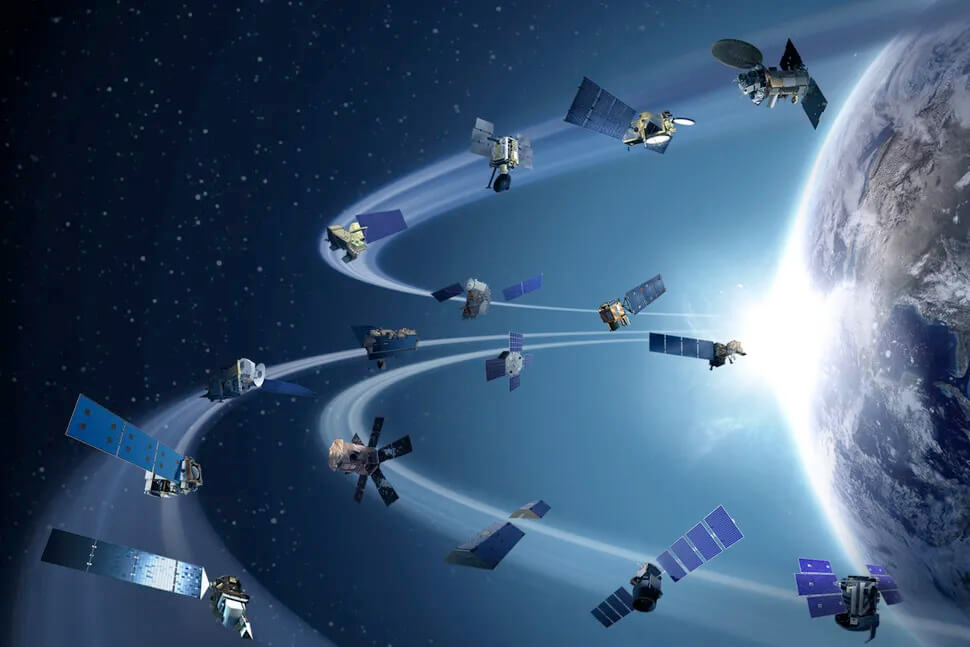The Trump administration's recent announcement of a "Golden Dome" strategic missile defence shield to protect the US is the most ambitious such project since President Ronald Reagan's Strategic Defense Initiative (SDI) of the 1980s.
Author
- Jack O'Doherty
PhD Candidate in Nuclear Strategy, University of Leicester
The SDI programme - better known by its somewhat mocking nickname of "Star Wars" - sparked a heated debate over its technical feasibility. Ultimately, it would never become operational. But do we now have the technologies to realise the Golden Dome shield - or is this initiative similarly destined to be shelved?
A completed Golden Dome missile defence shield would supposedly defend the US against the full spectrum of air and missile threats, including long-range intercontinental ballistic missiles (ICBMs) and those with shorter ranges - any of which could be armed with nuclear warheads.
But Golden Dome would also aim to work against cruise missiles and hypersonic weapons such as boost-glide vehicles, which use a rocket to reach hypersonic speeds (more than five times the speed of sound) before continuing their trajectory unpowered.
The missile defence shield could theoretically also protect against warheads placed in space that can be commanded to re-enter the atmosphere and destroy targets on Earth - known as fractional orbital bombardment systems.
Get your news from actual experts, straight to your inbox. Sign up to our daily newsletter to receive all The Conversation UK's latest coverage of news and research, from politics and business to the arts and sciences.
Ballistic missiles arguably pose the biggest threat because of the sheer numbers in the hands of other nuclear armed nations. ICBMs follow a three-phase trajectory : the boost, midcourse and terminal phases.
The boost phase consists of a few minutes of powered flight as the missile's rocket engines propel it into space. In the midcourse phase, the missile travels unpowered through space for about 20-25 minutes. Finally, during the terminal phase, the missile re-enters the atmosphere and hits the target.
Plans for the Golden Dome are likely to involve defensive weapons that target ballistic missiles during all three phases of their trajectory.
Boost-phase missile defence is attractive because it would only require shooting down a single target. During the midcourse phase, the ballistic missile will deploy its warhead - the section that includes the explosive charge - but could also release several decoy warheads. Even with the best radar systems, discriminating the real warhead from the decoys is incredibly difficult.
However, there are big questions over the technical feasibility of targeting ballistic missiles during their boost phase - and there is also a limited time window, given that this phase is relatively short.
The weapons platforms designed to target a ballistic missile in its boost phase could consist of a large satellite in low-Earth orbit, armed with multiple small missiles called interceptors. An interceptor could be deployed if a nuclear armed ballistic missile is launched at the US.
One study conducted by the American Physical Society suggested that, under generous assumptions, a space-based interceptor platform might be able to destroy a target from 530 miles (850km) away. This measure is known as the weapon's "kill radius".
Even with a kill radius of this size, a space-based interceptor system would require hundreds or even thousands of satellites, each armed with small missiles to achieve effective regional coverage. It might be possible to get round this constraint, though, by using directed-energy weapons such as powerful lasers or even particle beam weapons , which use high-energy beams of atomic or subatomic particles.
A critical vulnerability of such a system, however, is that an adversary could use anti-satellite weapons - missiles launched from the ground - or other offensive actions such as cyberattacks to destroy or disable some of the interceptor satellites. This could establish a temporary corridor for an adversary's ballistic missile to pass through.
'Brilliant Pebbles'
An idea for a space-based boost-phase defence system called Brilliant Pebbles was proposed towards the end of the 1980s. Rather than having large satellites with multiple missiles, it entailed having around 1,000 small individual missiles in orbit. It would have also used about 60 orbiting sensors called Brilliant Eyes to detect launches.
Brilliant Pebbles was cancelled by President Bill Clinton's administration in 1994. But it provides another template for technologies that could be used by Golden Dome.
Options for destroying ballistic missiles during the midcourse of their trajectories include existing weapons systems such as the Ground-based Midcourse Defense system and the US Navy's ship-based Aegis platform .
Unlike midcourse-phase missile defence (which must cover a large geographical area), terminal-phase interception is a last line of defence. It usually involves destroying incoming warheads that have re-entered the atmosphere from space.
A plan for destroying single warheads during the terminal trajectory phase could use future versions of existing weapons platforms, such as the Patriot Advanced Capability 3 Missile Segment Enhancement or the Terminal High Altitude Area Defense .
However, while there has been progress in this technology in the decades since Star Wars was proposed, the debate continues over whether these systems work effectively.
Ultimately, it is the huge costs, as well as political opposition, that could pose the biggest hurdles to implementing an effective Golden Dome system. Trump's proposal has revived the idea of missile defence in the US. But it remains unclear whether its most ambitious components will ever be realised.
![]()
Jack O'Doherty is affiliated with the NATO Defense College, as a Junior Associate Fellow.






